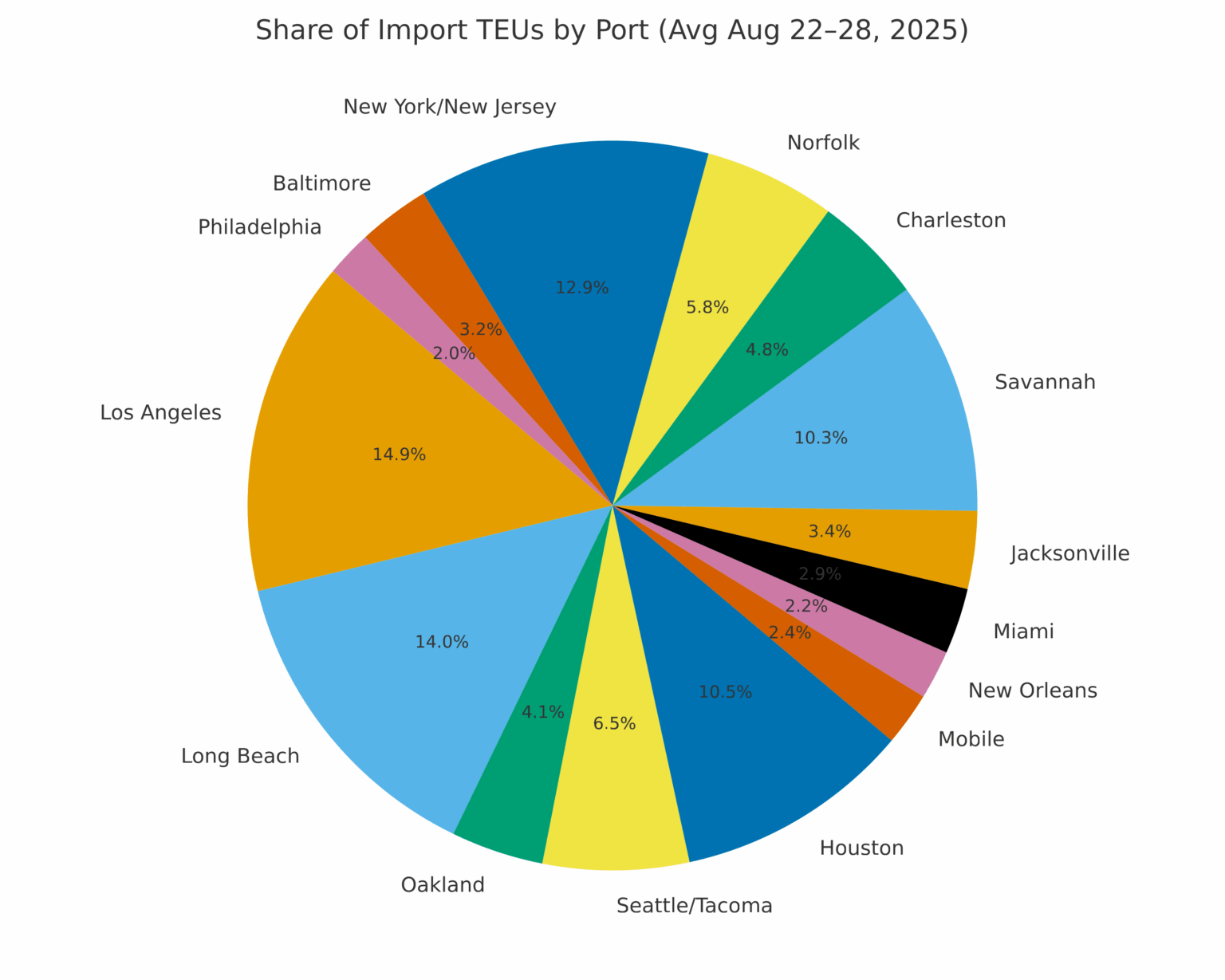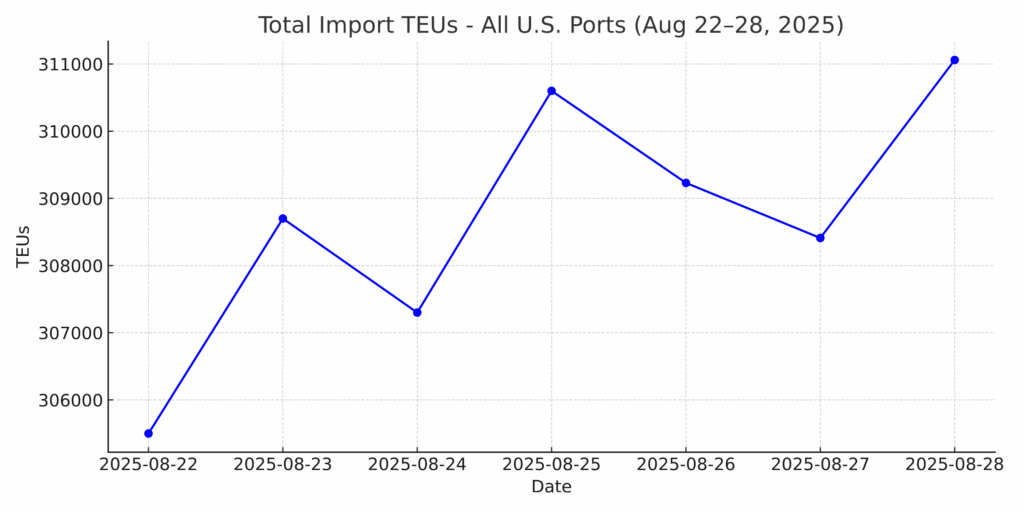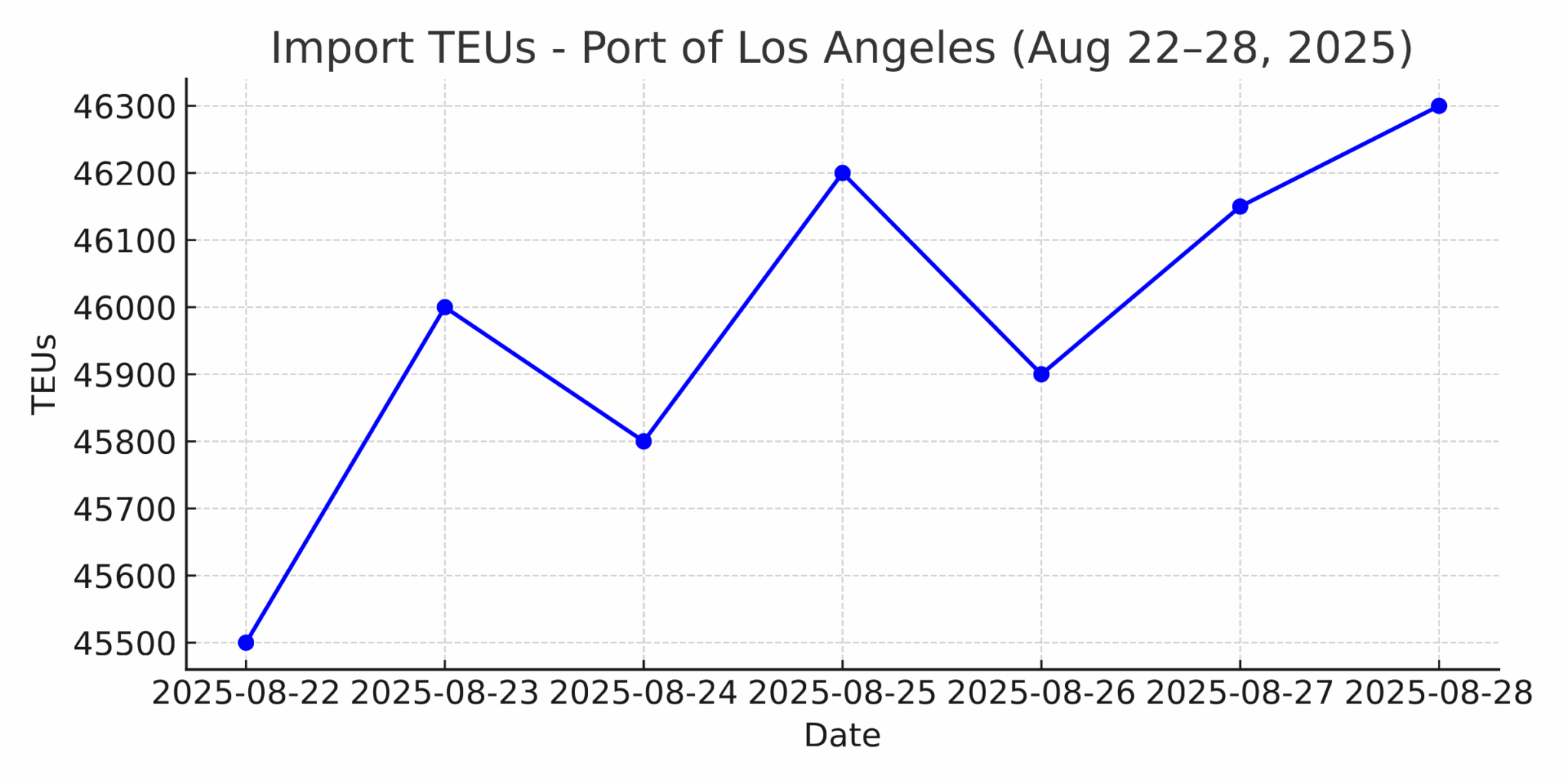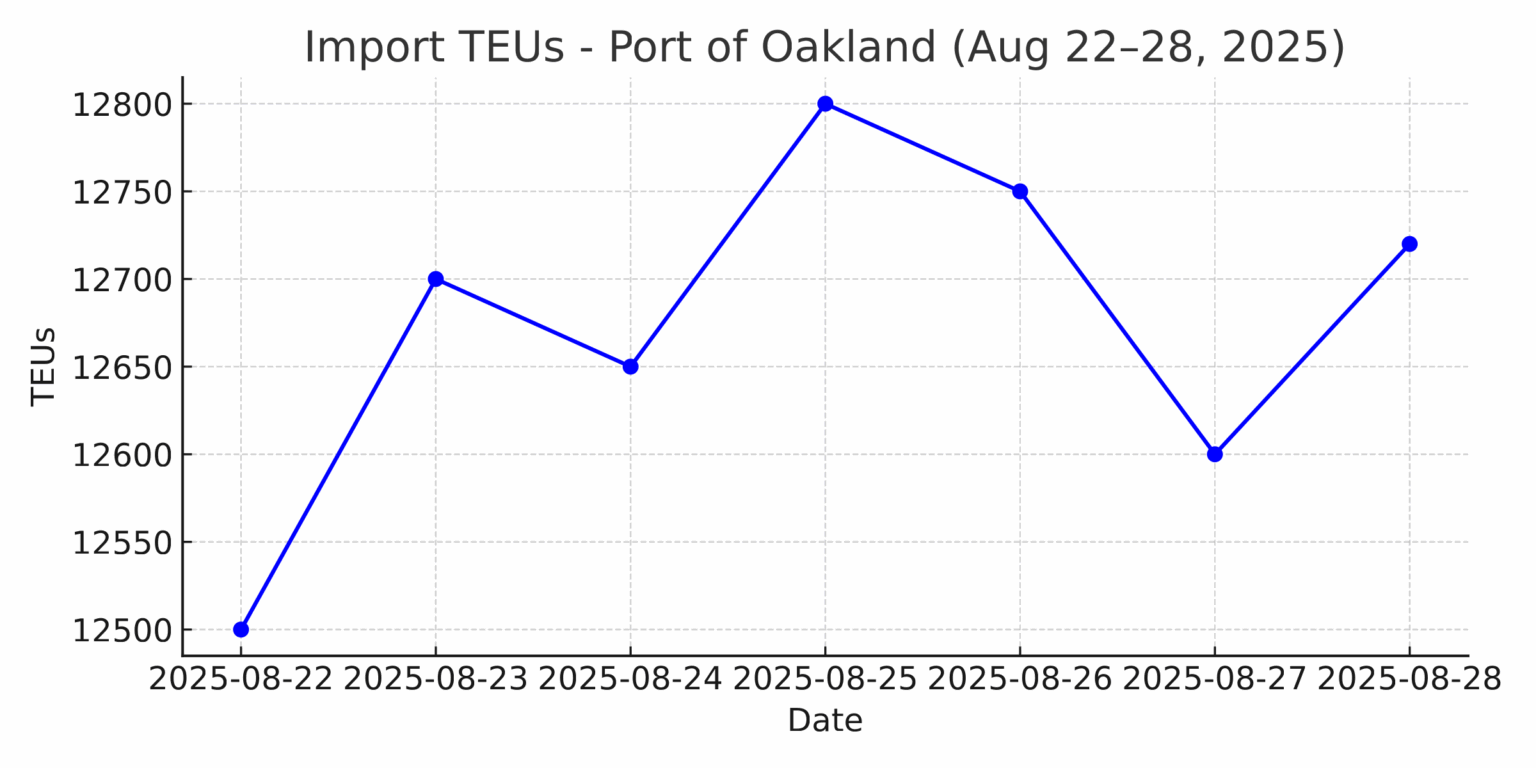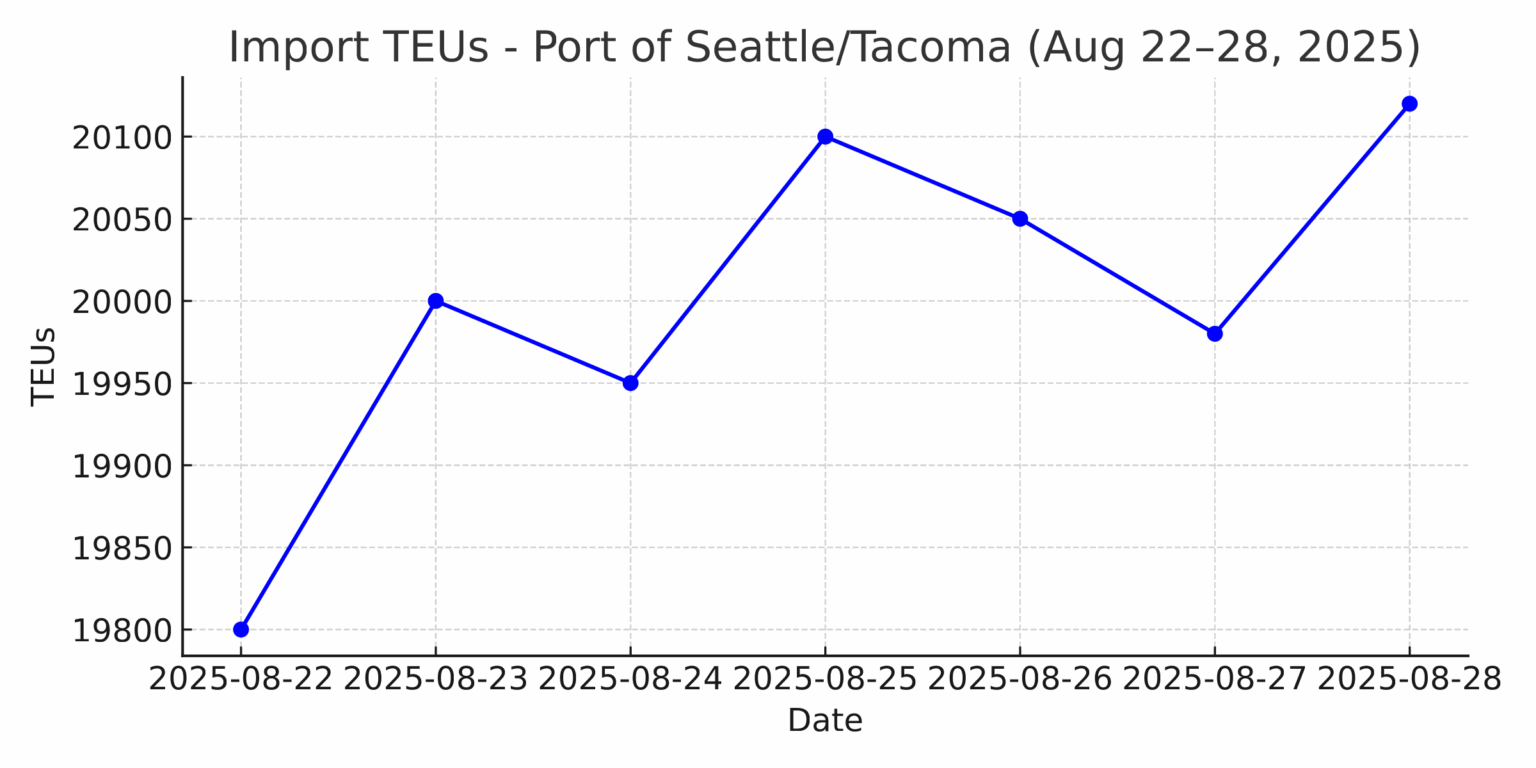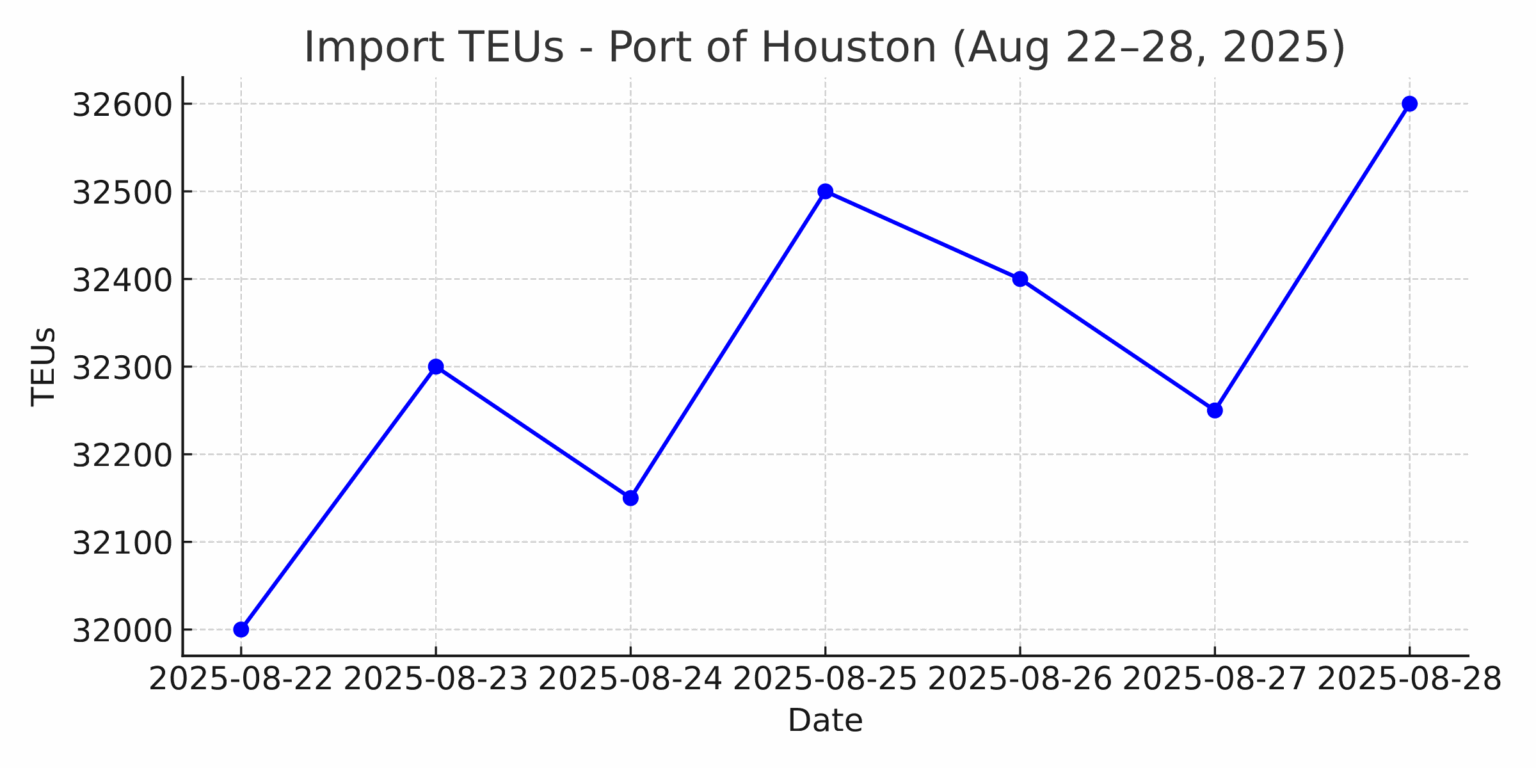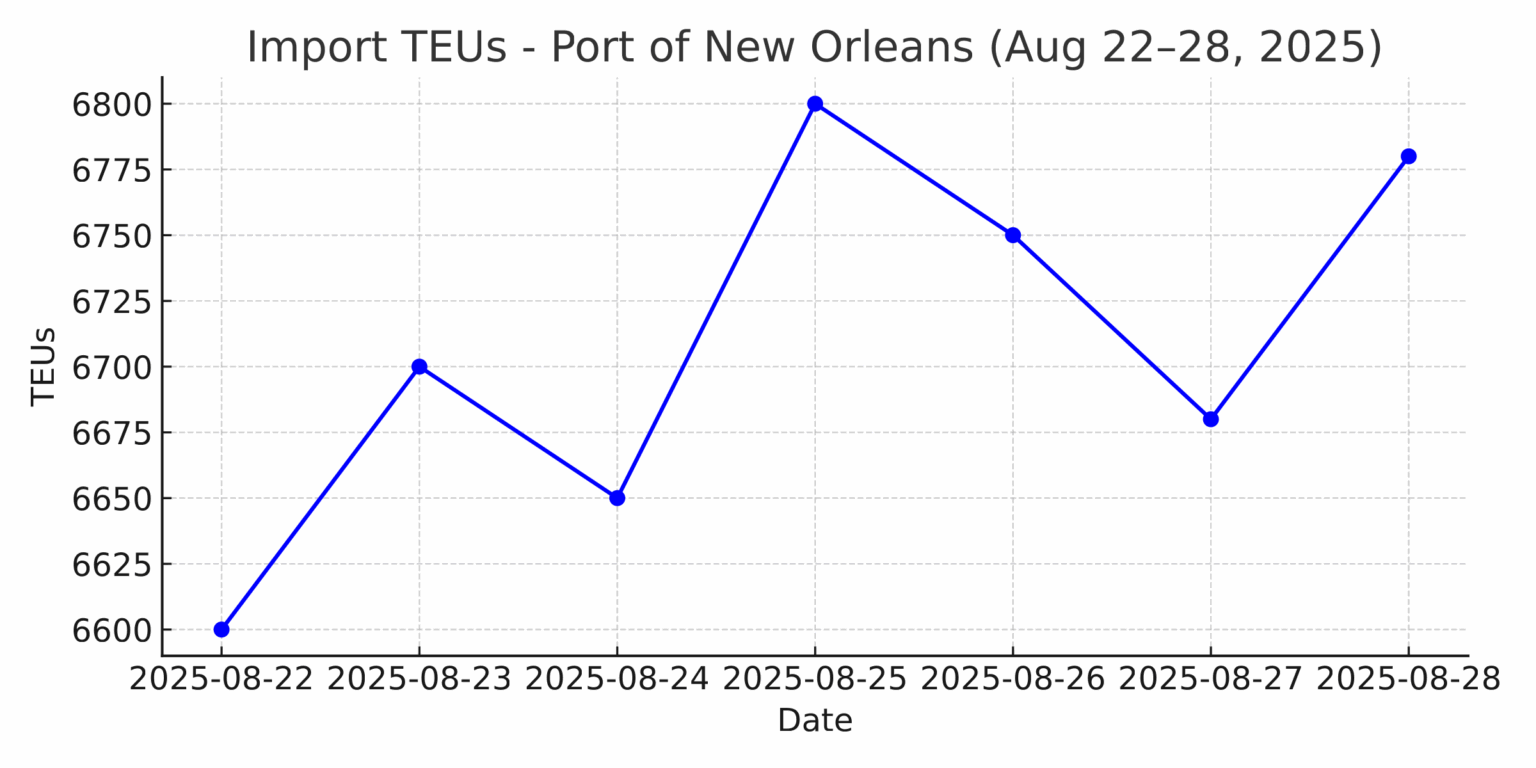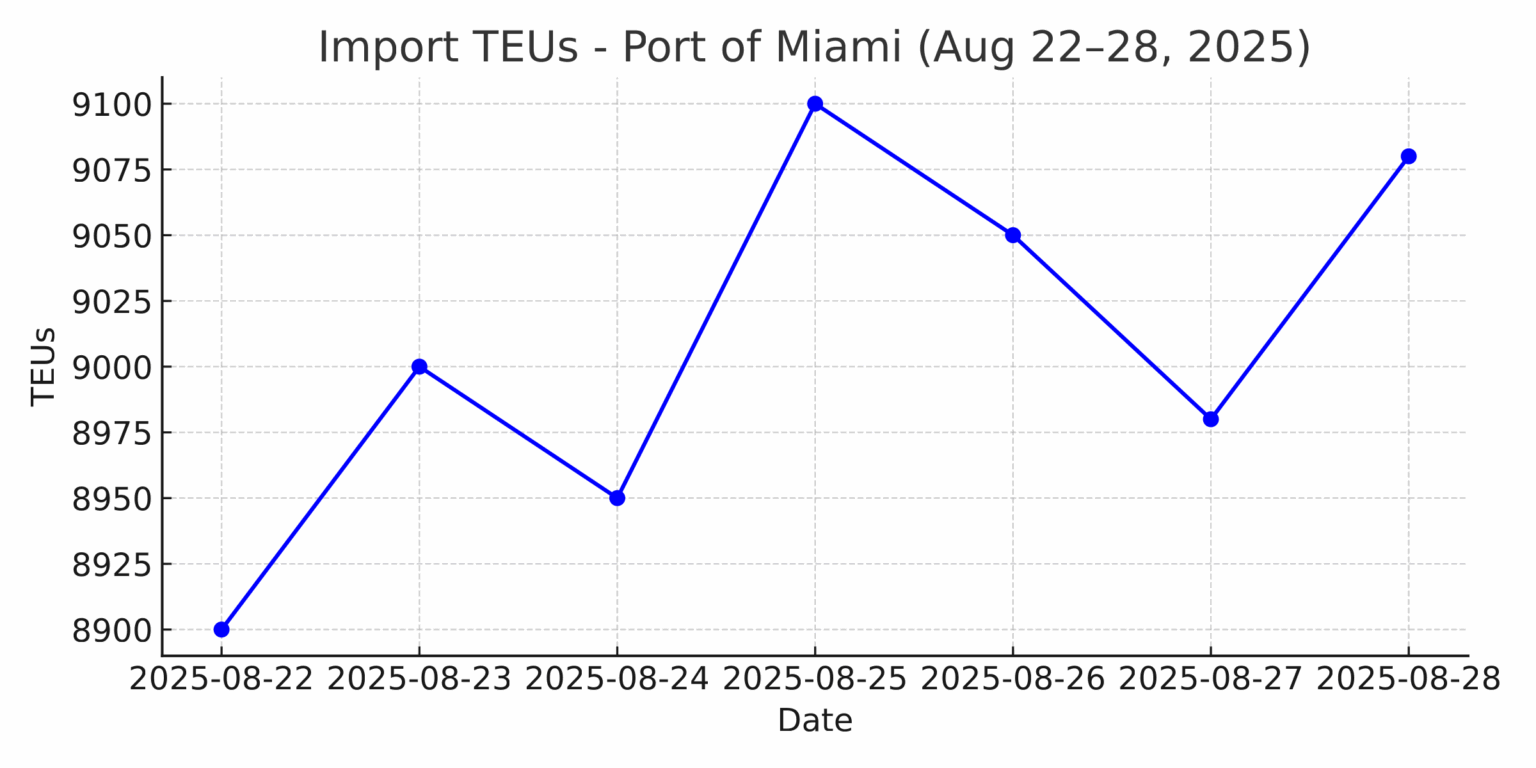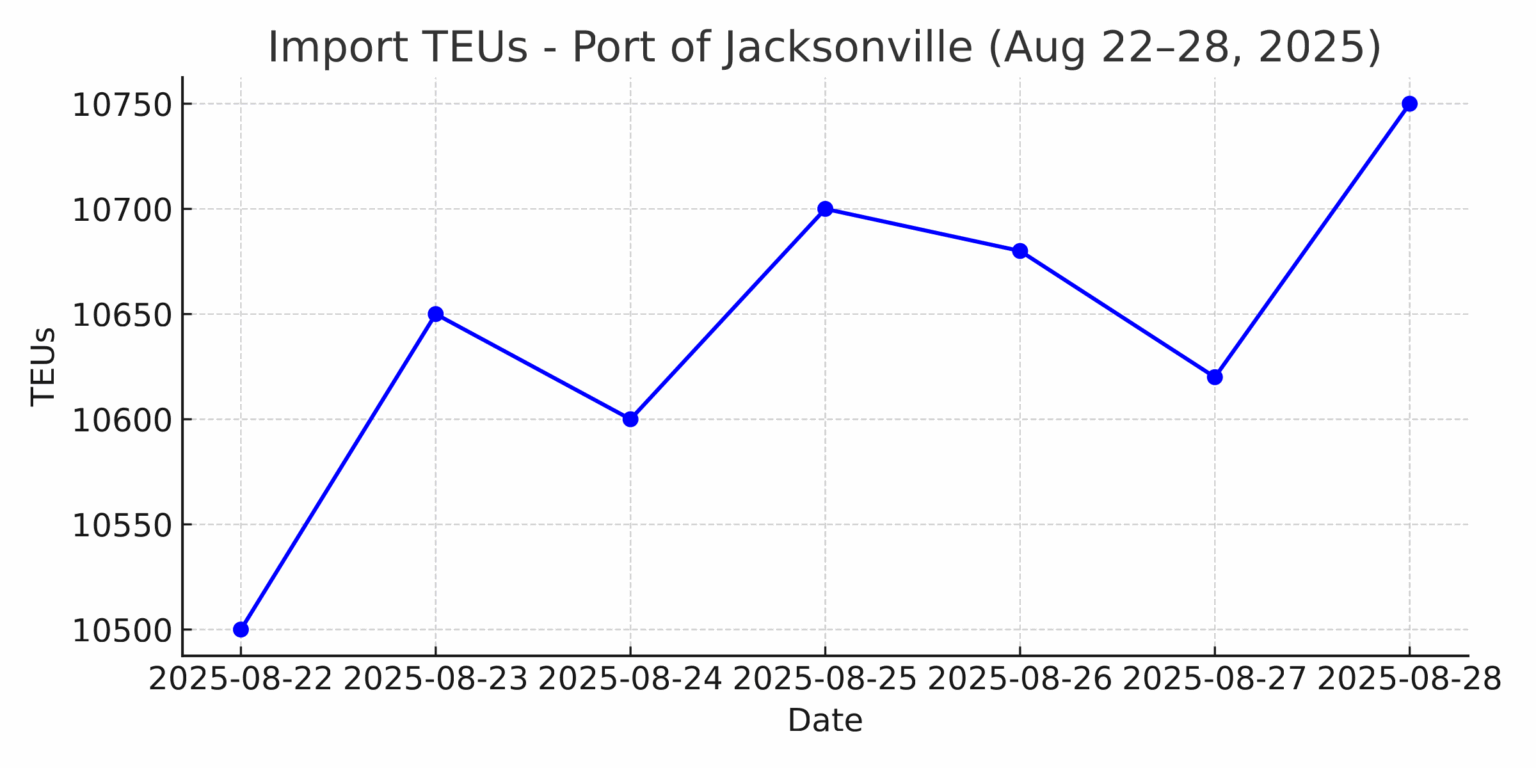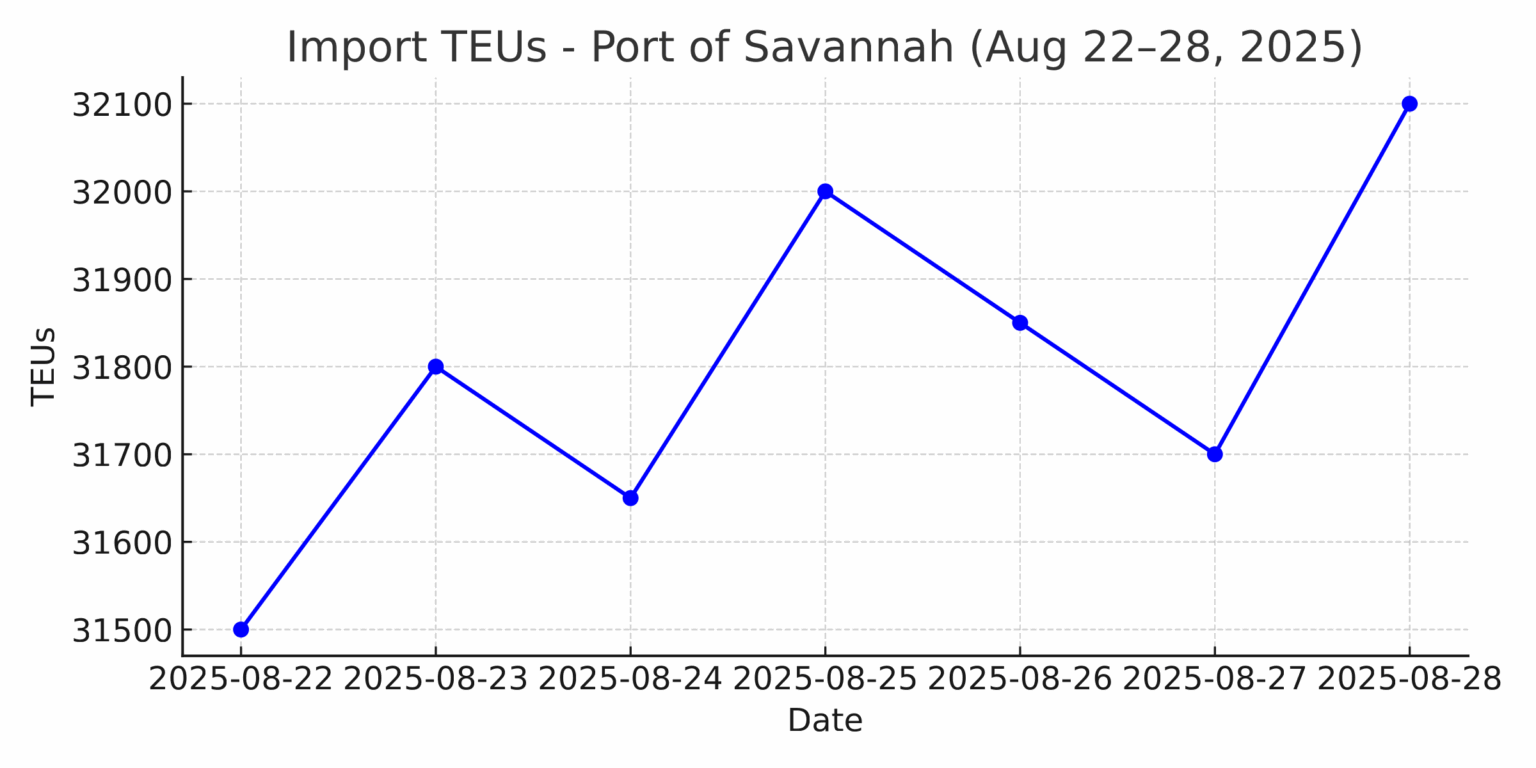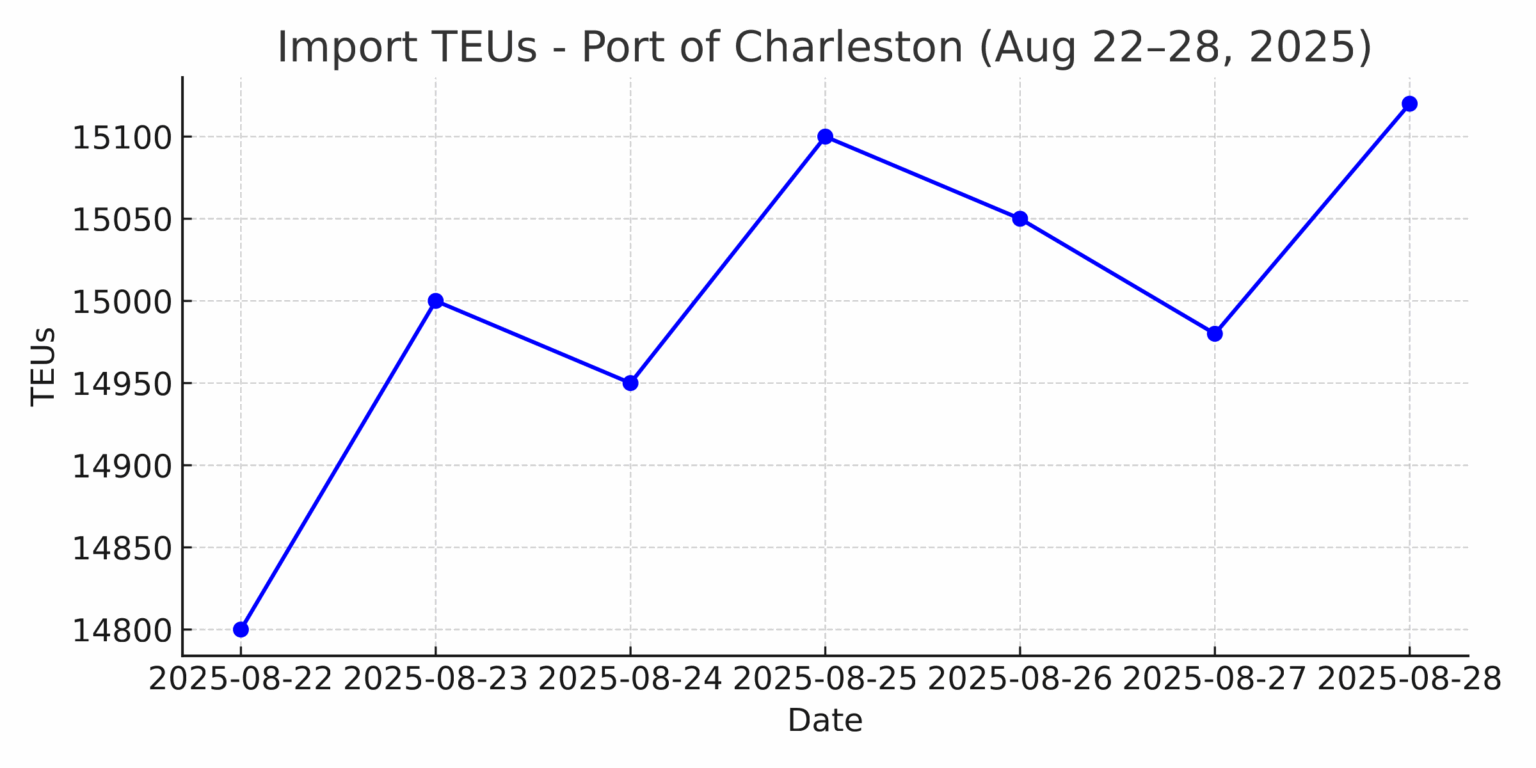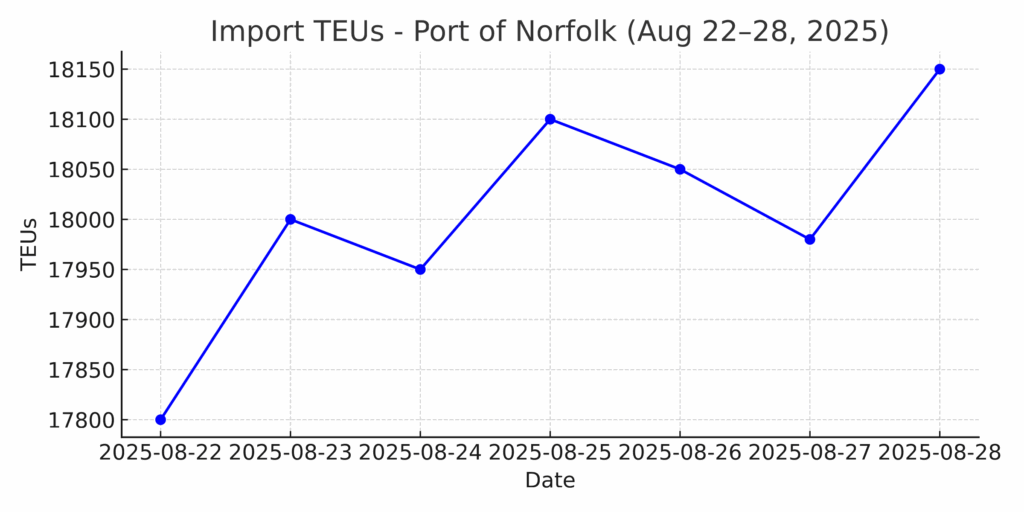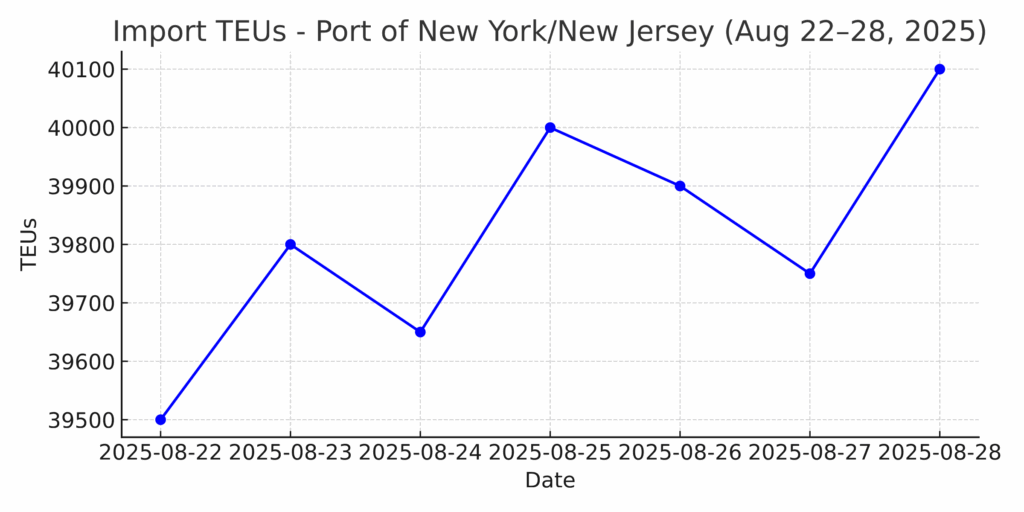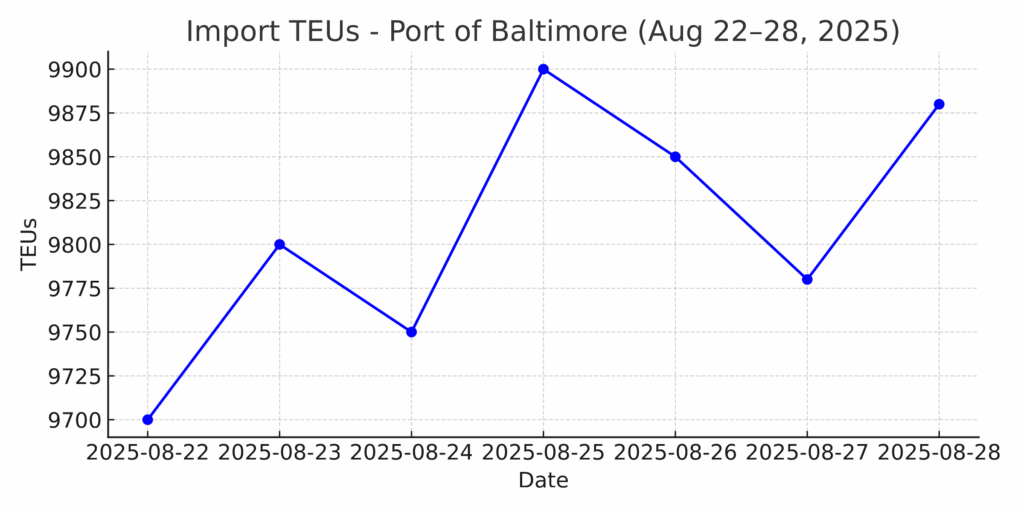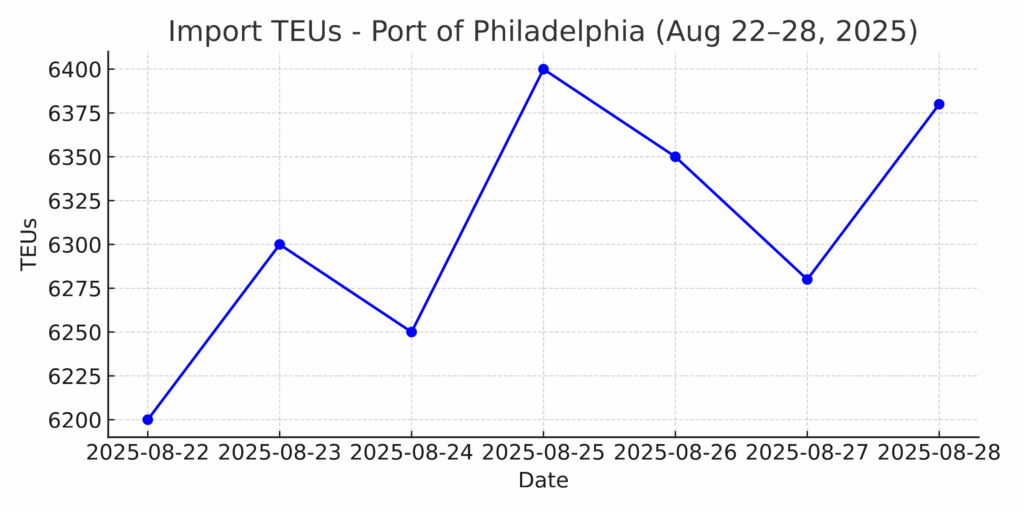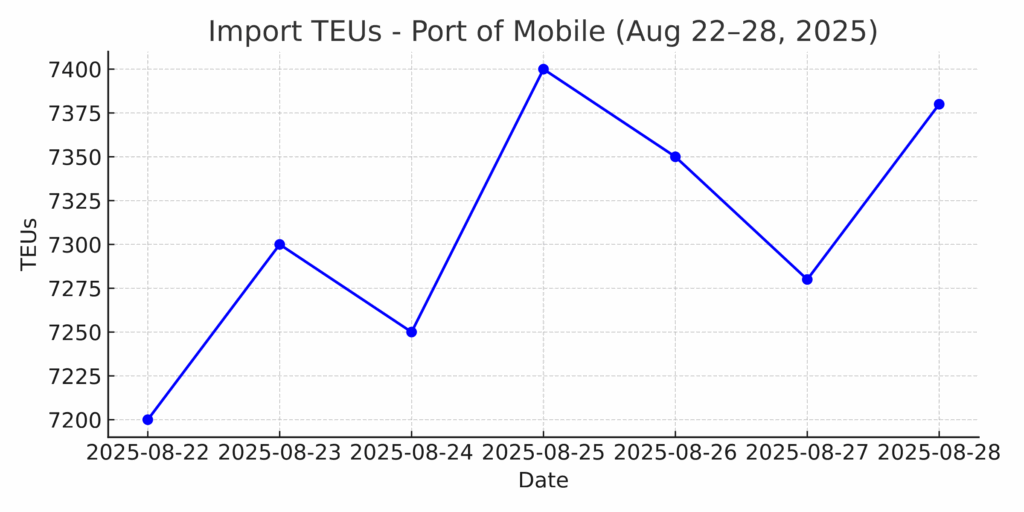
Chicago Container Rail Terminal
2330 words 8 minute read – Let’s do this!
Welcome to the very last Market Update of August 2025. This week’s global trade headlines highlight just how unpredictable the container market has become. From the ILA’s lawsuit over automation at Norfolk, to sliding Asia–U.S. spot rates after July’s tariff rush, to fresh policy shifts like the EU–U.S. trade truce and new 50% tariffs on Indian exports, shippers and carriers alike are being forced to adjust quickly. Adding to the mix is a record container ship orderbook of 9.4 million TEUs — nearly a third of the global fleet and the highest ratio since 2009. Rather than creating more real cargo, this surge in capacity is fueling vessel bunching, feast-or-famine port calls, and inland rail volatility across key hubs. Analysts warn that while short-term spikes may occur, overall U.S. import demand is softening heading into late 2025, making supply chain planning even more complicated. Rates are under pressure, capacity is shifting, and policy uncertainty continues to shape demand on every major lane. Looking to stay ahead of the curve? Follow Port X Logistics on LinkedIn for real-time updates, industry insights, and a behind-the-scenes look at what’s shaping global freight. If you’d rather have these updates land directly in your inbox every Thursday, email us at Marketing@portxlogistics.com and we’ll make sure you’re on the list.
The International Longshoremen’s Association (ILA) has taken the Virginia Port Authority (VPA) and its CEO, Stephen Edwards, to federal court, accusing them of stepping on the union’s master contract. At the heart of the dispute are new semi-automated rail cranes being installed at Norfolk International Terminals. The union says the VPA used its operating arm, Virginia International Terminals (VIT), to push the equipment through without going through the required review process. Under the ILA’s contract, any new technology has to be vetted by a joint committee to sort out staffing, training, and pay rates — and local unions need to be notified before changes happen. Instead, VIT argued the cranes were purchased by the VPA, not VIT, and therefore outside the contract’s rules. The ILA claims this isn’t just about cranes, but also about the port trying to tip the scales during contract talks earlier this year by pushing for automation and fewer worker protections. After filing multiple grievances, the union says it had no choice but to sue. The VPA has so far declined to comment.
Beyond Virginia, the case is being closely watched as a test of how new technology will be introduced at East and Gulf Coast ports — and whether labor or management will set the pace for automation on the waterfront.
Asia-U.S. container rates have entered a steep decline following the July import surge, when shippers rushed to move cargo ahead of new tariff deadlines. With that frontloading now behind the market, spot rates have continued to slide, dropping 60–70% since their summer peak. A further 90-day extension of the tariff truce between China and the U.S., now set to last into November, is not expected to spark another wave of imports. The latest data shows just how sharp the correction has been. Rates to the U.S. West Coast fell 10% last week to $1,744 per FEU — the lowest level since December 2023 — while East Coast prices dropped 21% to $2,733 per FEU, a 34% decline for August alone. Much of the volatility stems from timing gaps, as tariffs that were supposed to be eased are still being collected while final details are ironed out. In the meantime, a surge in vessel supply and carrier redeployments are adding to the downward pressure. One major alliance is even splitting a service to pull as many as 10 ships away from U.S. routes in order to avoid new port fees coming in October. Other major trade lanes are also showing strain, though not all are moving in lockstep. Asia–North Europe spot prices slipped 6% last week to around $3,100 per FEU, and Asia–Mediterranean rates dipped 1% to roughly the same level. By contrast, the trans-Atlantic has held steady at about $2,284 per FEU. Even so, across most lanes, spot prices remain roughly 60% lower than this time last year, underscoring the ongoing challenge of overcapacity in the global container market.
For U.S. importers, this shifting rate environment highlights the importance of careful planning — aligning contracts, timing bookings, and managing supply chains strategically in a market where pricing and capacity remain highly unpredictable.
The long-awaited framework for the EU–U.S. trade truce has been released, offering a pause in escalating tensions that have weighed heavily on trans-Atlantic trade. While not yet legally binding, the deal provides a clearer roadmap and should help bring more stability to container flows in the months ahead. For now, existing tariffs remain in place. The 15% duty on most EU exports to the U.S. and the 27.5% tariff on automobiles will stay until the EU introduces reciprocal tariff cuts on a broad range of American industrial and agricultural products. The impact on shipping is mixed. On one hand, flows of goods like pharmaceuticals, industrial equipment, and agricultural commodities should stabilize since they avoided new tariff hikes. This could mean more predictable volumes on North Europe–U.S. East Coast and Gulf routes. On the other hand, auto exports remain under strain. Shipments from Europe to the U.S. are down nearly 17% so far this year compared with 2024, with Germany — the largest supplier of vehicles and parts — hit the hardest. Higher landed costs are also raising questions about consumer demand in the U.S. If buyers turn to cheaper alternatives, domestic and Asian suppliers could gain share in categories like wine, food, and mid-tier manufactured goods. Overall container volumes are slightly higher this year, but EU–U.S. demand has stayed flat under the combined pressure of tariffs and currency shifts.
Broader negotiations on standards, digital policies, and market access could reshape trade in the future, but right now the market is unpredictable. Shippers need to stay agile — pulling cargo forward when tariffs loom, diversifying sourcing, and keeping a close eye on rate swings — to make sure they stay ahead of shifting demand.
The new 50% tariffs on Indian exports to the U.S., which kicked in this week, are already shaking up the India–U.S. East Coast trade lane. Carriers have started blanking sailings out of Nhava Sheva and Mundra in September as bookings drop, with forwarders pointing to at least three service cuts in the coming weeks. Spot rates have also softened. Carriers pulled back planned rate hikes for Sept. 1 and are now holding contracts steady, with West India–New York loads moving at roughly $2,000–$2,100 per FEU, down from earlier highs. Exporters warn the tariffs could hit volumes hard, with more than half of India’s shipments to the U.S. now at a steep pricing disadvantage compared to competitors in China and Southeast Asia. July volumes spiked to 152,630 TEUs as shippers rushed to get cargo out ahead of the deadline — but that surge may quickly fade.
For U.S. importers, the fallout could mean a sharper pivot toward Southeast Asian sourcing as supply chains rebalance to offset India’s new cost burden.
Import TEUs are down 1.6% this week from last week – with the highest volumes coming into Los Angeles 14.9%, Long Beach 14% and NY/NJ 12.9%. As we touched quickly upon in the Market Update opener, container shipping orderbook has reached a record 9.4 million TEUs in 2025, representing nearly a third of the global fleet and the highest ratio since 2009. While more ships might sound like good news for shippers, the reality is more complicated: too much capacity and not enough freight. This imbalance is pushing ocean rates lower and creating uneven flows of cargo into U.S. ports and rail hubs. Importantly, a record orderbook doesn’t mean more freight is coming to the U.S. — it simply means more slots are available whether or not demand grows.
The most immediate issue this creates is vessel bunching. Overcapacity does not produce new cargo, but it does result in erratic arrivals. Carriers are deploying larger vessels, cascading excess ships onto secondary lanes, and blanking sailings in an attempt to manage supply. The result is feast-or-famine port calls at gateways like Savannah, Houston, New York/New Jersey, and Charleston, where 15,000–20,000 TEU ships can flood terminals with volume in a single call. Inland, this pattern drives rail volatility in markets such as Chicago, Dallas, Memphis, and Kansas City, where ramps may be overwhelmed one week and starved the next. From a drayage perspective, the pain point becomes inconsistency — big bursts of freight followed by slowdowns.
Looking ahead into the final months of 2025, analysts expect global trade growth to decelerate. This means U.S. imports are unlikely to see sustained above-normal volumes for the remainder of the year. However, short-term spikes are still possible as shippers front-load ahead of tariff changes or push through late-season holiday freight, though much of that is usually in place by October. The net effect may be slightly higher-than-expected peaks in certain weeks, but overall demand remains soft compared with 2024.
Carrier behavior is also shaping how freight moves inland. With excess capacity to fill, carriers are discounting rates aggressively to pull in discretionary cargo. This could lead to shifts in routing — for example, cargo being steered to East and Gulf Coast ports rather than the West Coast — but it doesn’t grow the total pie. For inland operators, this translates into uneven distribution: some markets may be hit with surges while others remain relatively quiet.
With record vessel orders, bunching at ports, and unpredictable inland flows, shippers are facing a freight environment full of volatility. That’s exactly where Port X Logistics steps in. We provide drayage, transloading, and trucking without the freight freakouts — just reliable, tech-driven service designed to keep cargo moving and teams confident. Our asset-based network spans every major U.S. and Canadian port and rail hub, giving you the scale and flexibility to absorb sudden surges or schedule shifts. Backed by our OpenTrack visibility platform, we track vessels, monitor container availability, handle holds, and even manage terminal fees to keep disruptions off your plate. Unlike others who wait until the last free day, we act with urgency — and our No Demurrage Guarantee ensures you’re protected when shipments are dispatched to us early and cleared on time. In a market where carriers and volumes are unpredictable, Port X Logistics delivers consistency, speed, and clarity to every move.

What’s happening at the ports and rails?
You can find all the information on the below link where we cover port congestion, chassis issues and capacity lead times weekly at all U.S. and Canada Ports and rail heads on our website – click on the link below
Savannah: Georgia ports are powering record growth, according to a new University of Georgia study. The Ports of Savannah and Brunswick generated $174 billion in sales and $77 billion in GDP in FY2024, while supporting more than 650,000 jobs statewide — nearly 42,000 more than last year. Savannah is now handling 35 weekly vessel calls and up to 16,000 daily truck moves, while Brunswick leads the nation in roll-on/roll-off cargo with over 900,000 units moved. Together, the ports account for 12% of all jobs in Georgia, underscoring their role as the state’s most powerful economic engines. When time is tight, our Savannah transload warehouse is ready to deliver. From urgent cross-docks to last-minute transloads and hazmat containers that can’t wait, our team makes it happen. With a dedicated 12-truck drayage fleet and full coverage across Savannah, Charleston, and Jacksonville, we keep freight moving quickly and without excuses. Need yard space? We’ve got it. Need it turned same-day? Consider it done. For competitive rates and service you can count on, connect with our South Atlantic team at sav@portxlogistics.com— and let’s get your freight moving.
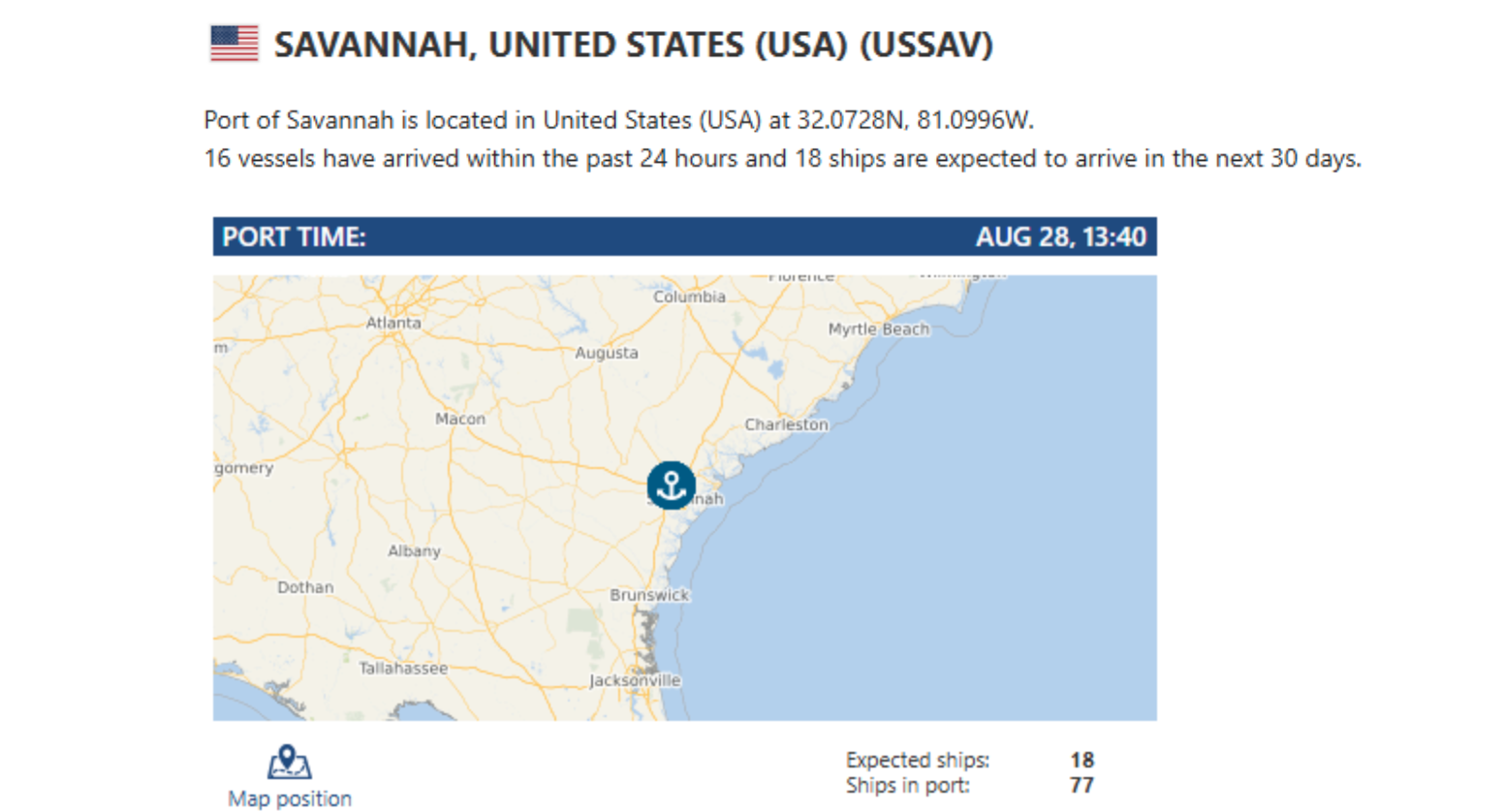
Chicago: Union Pacific recently launched a new intermodal rail service connecting Southern California’s Inland Empire to the Chicago area. This service is part of a broader industry shift toward strengthening coast-to-coast freight options. The launch comes as CSX and BNSF also introduced similar coast-to-coast services linking California with key eastern hubs like Charlotte and Jacksonville, intensifying competition as networks brace for potential rail mergers. Need Chicago containers moved fast? Our asset-based drayage team is fully loaded and ready to roll. With 88 trucks, 150 chassis (yes, even 20’s), plus over 100 tri-axle and spread axles combined, we’ve got the specialized equipment to handle it all — including heavy-haul with secured permits. Add in our secured yard space and top-tier service, and you’ve got the ultimate Chicago drayage solution. For rates, capacity, and service that delivers, reach out to letsgetrolling@portxlogistics.com
Did you know?
Carrier911 keeps freight moving through holiday weekends — no delays, no excuses. When time-sensitive shipments can’t wait, our crisis management experts step in with decades of airfreight and expedited logistics experience. From Aircraft on Ground (AOG) recovery and hotshot trucking to aerospace, industrial, and automotive logistics, we’re built to handle it all — including front and back-end charter services and first and last mile On-Board carrier (OBC).
Our exclusive-use Sprinters, straight trucks, and dry vans are positioned and ready all day and all night, making us the perfect solution for your urgent holiday weekend shipments. Real-time driver tracking? At your fingertips. PODs delivered instantly to your inbox? Guaranteed. With Carrier911, you don’t just get capacity — you get speed, visibility, and peace of mind when the stakes are highest.
So as the long weekend approaches, don’t sweat the freight emergencies. We’re here to make sure your shipments run smoothly while you focus on the holiday. For a free demo, email info@carrier911.com or schedule at portxlogistics.com/tech-demo
This holiday weekend, we’ve got your back — 24/7/365.
Import Data Images
